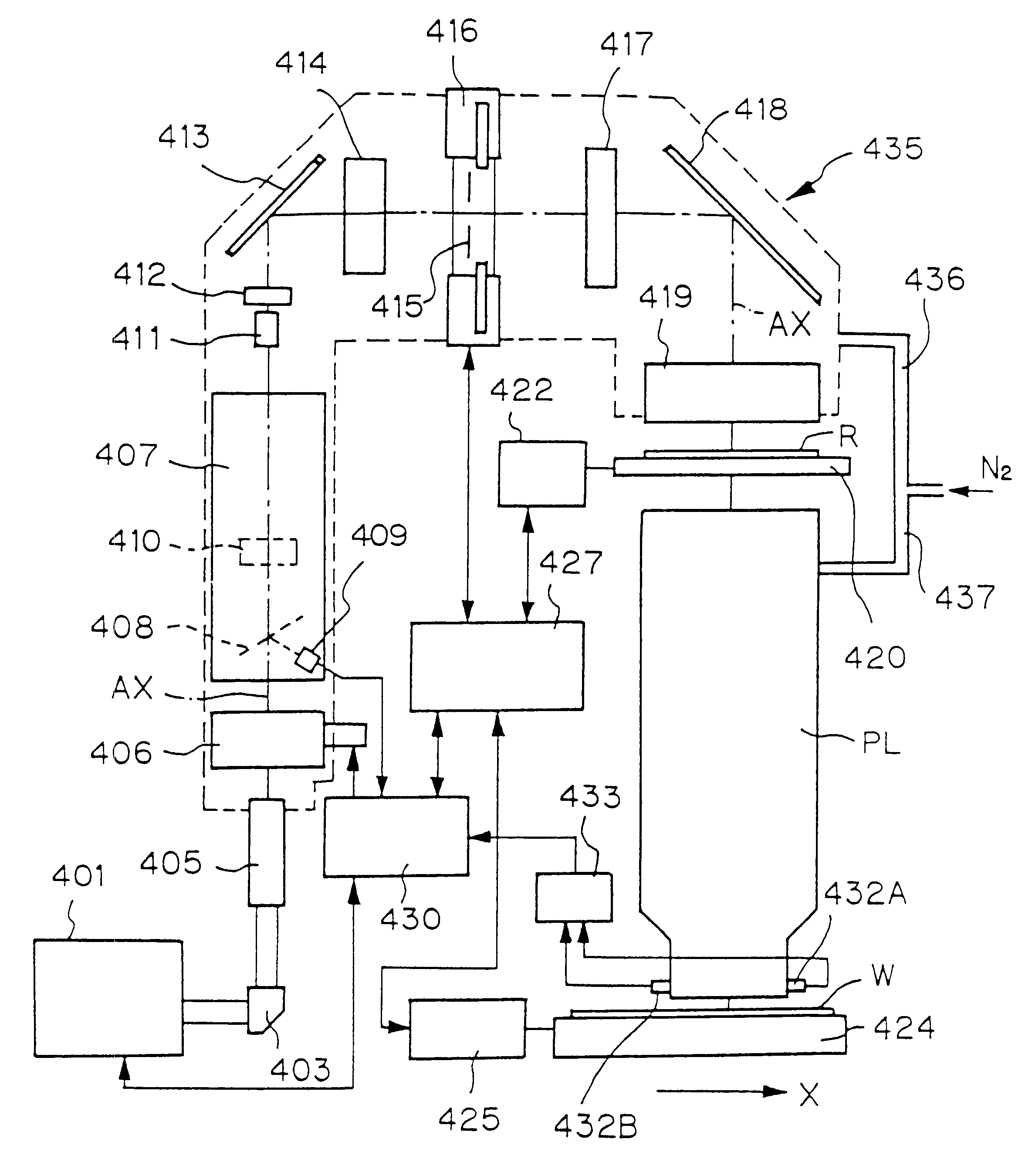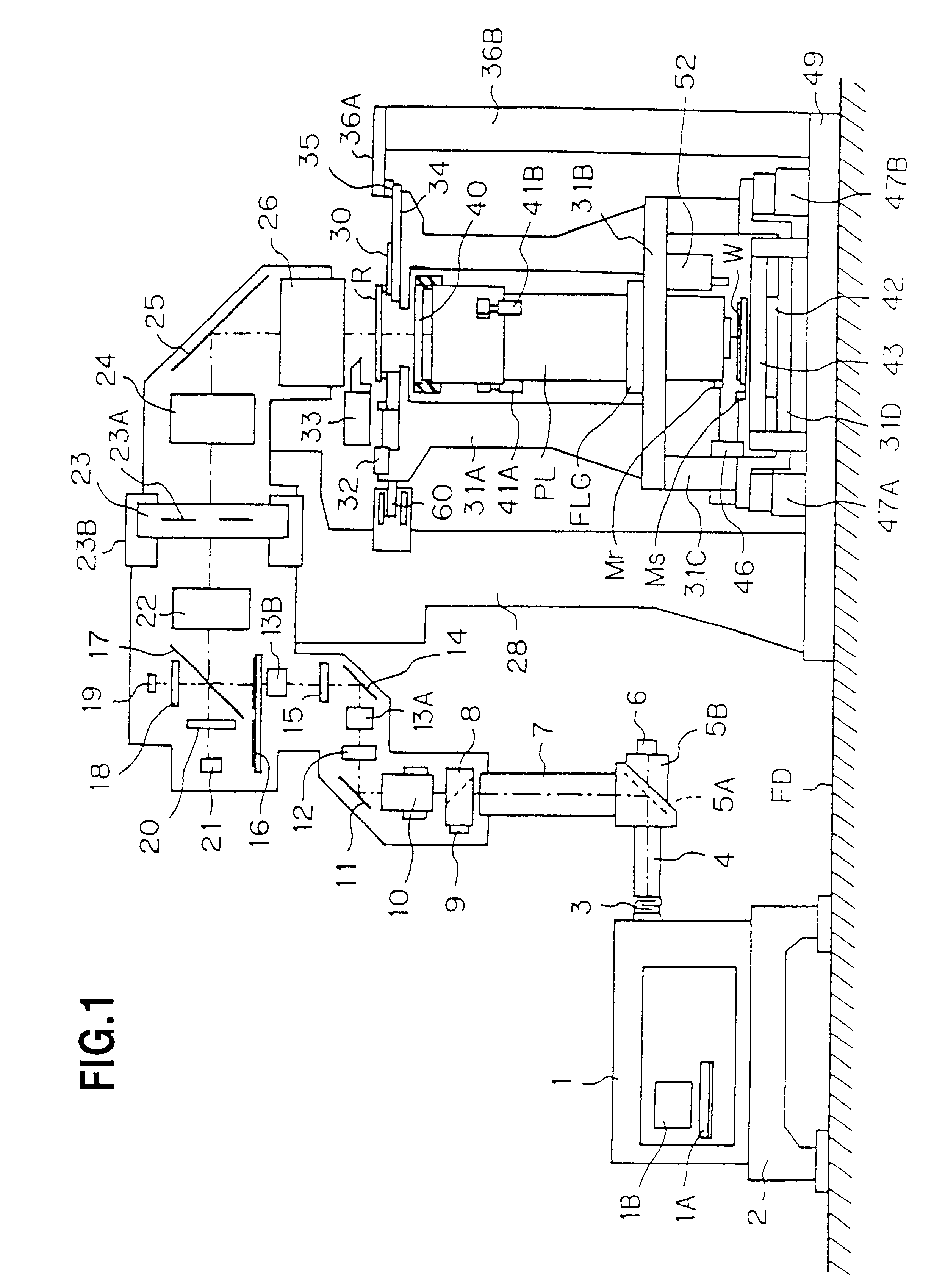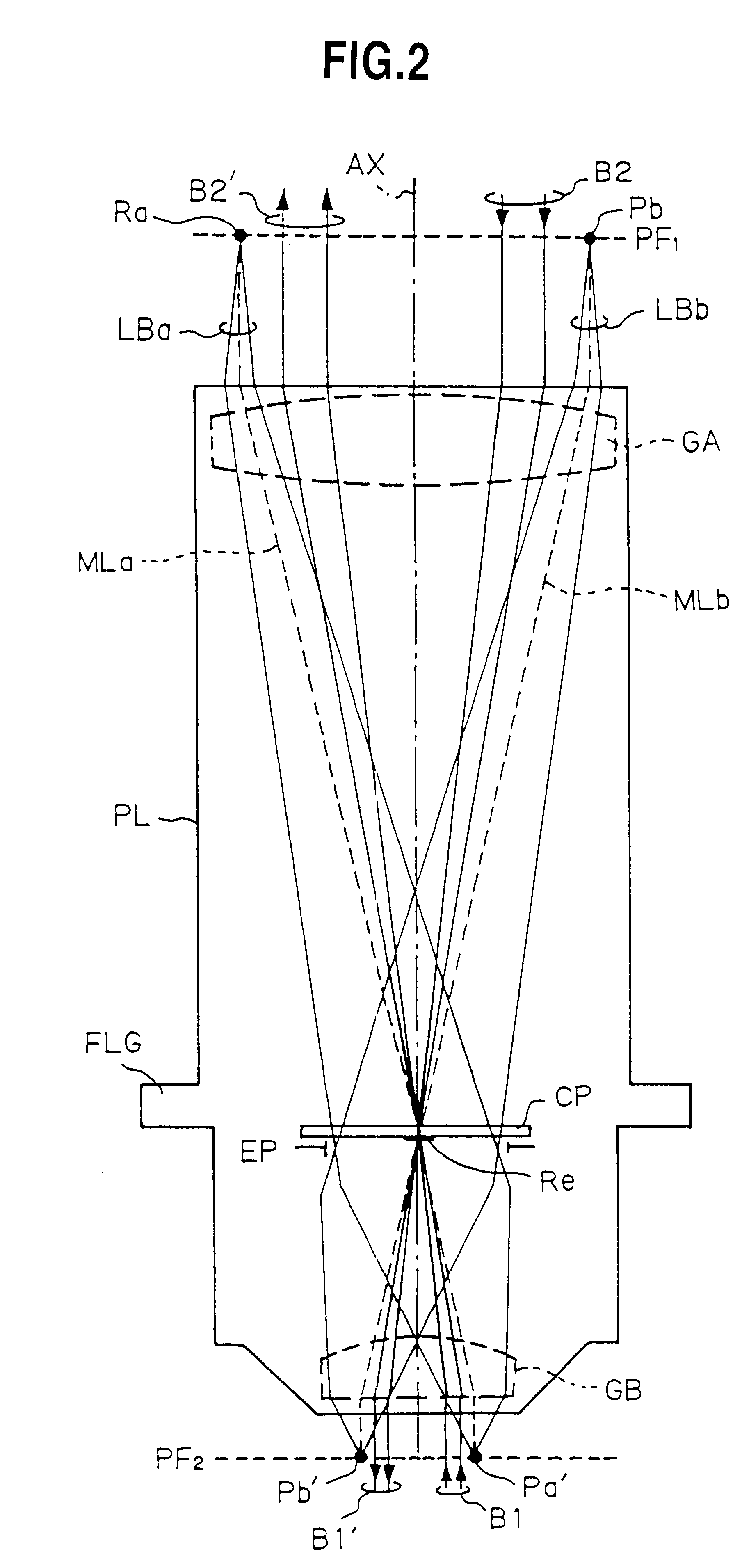Exposure apparatus, exposure method using the same and method of manufacture of circuit device
a technology of exposure apparatus and exposure method, which is applied in the direction of microlithography exposure apparatus, printers, instruments, etc., can solve the problems of reducing laser output, reducing laser output, and difficult chromatism of projection optical system upon illumination ligh
- Summary
- Abstract
- Description
- Claims
- Application Information
AI Technical Summary
Benefits of technology
Problems solved by technology
Method used
Image
Examples
first embodiment
A description will be made of the overall construction of a projection exposure apparatus suitable for practicing the present invention with reference to FIG. 1. FIG. 1 shows a projection exposure apparatus of a step-and-scan type which is so adapted as to scan a semiconductor wafer W relative to a reticle R while projecting a circuit pattern of the reticle R onto the semiconductor wafer W through an projection optical system PL using an ArF excimer laser light source 1 which is narrowed so as to avoid an absorption band of oxygen between ranges of wavelengths of 192 nm to 194 nm.
As shown in FIG. 1, the main body of the ArF excimer laser light source 1 is equipped through a vibration proofing table 2 on a floor portion FD inside a clean room, or outside the clean room in some cases, of a semiconductor manufacture plant. The main body of the ArF excimer laser light source 1 is provided with a light source control system 1A for exclusive use, including an input unit such as, for examp...
second embodiment
In the embodiment as shown in FIG. 25, transmittance data including both of the illumination optical system and the projection optical system PL is computed on the basis of a ratio of the intensity value of the illumination light detected by each of the detectors 432A and 432B to the intensity value of the original laser light energy, and the exposing conditions at the time of controlling the exposure amount are corrected in accordance with a variation in the transmittance data. The exposure amount, however, can also be controlled at a necessary degree of precision simply based on each of output signals from the detectors 432A and 432B, without using the photoelectric detector 409. Therefore, a device construction and operations necessary for this configuration will be described hereinafter as the present invention, with reference to FIG. 26.
FIG. 26 shows a relationship of the position of the tip end portion of the projection optical system PL with the position of the wafer stage 42...
third embodiment
Then, a description will be made of the projection exposure apparatus according to the present invention suitable for use in practicing the present invention, with reference to the accompanying drawings. In this embodiment, the present invention is applied to a scanning type projection exposure apparatus of a step-and-scan type, which uses a projection optical system of a reflection-refraction type as a projection optical system.
FIG. 29 shows a brief configuration of the projection exposure apparatus of this embodiment. In FIG. 29, illumination light IL composed of pulse laser light emitting from an excimer laser light source 502 with its emission state controlled by an exposure control unit 501 is deviated by an eccentric mirror 503 and reaches a first illumination system 504. As the excimer laser light source 502 in this embodiment, there may be used a broad-banded laser light source of a KrF excimer laser (wavelength of 193 nm) with a half value width of an oscillating spectrum m...
PUM
| Property | Measurement | Unit |
|---|---|---|
| wavelength | aaaaa | aaaaa |
| wavelength | aaaaa | aaaaa |
| central wavelength | aaaaa | aaaaa |
Abstract
Description
Claims
Application Information
 Login to View More
Login to View More - R&D
- Intellectual Property
- Life Sciences
- Materials
- Tech Scout
- Unparalleled Data Quality
- Higher Quality Content
- 60% Fewer Hallucinations
Browse by: Latest US Patents, China's latest patents, Technical Efficacy Thesaurus, Application Domain, Technology Topic, Popular Technical Reports.
© 2025 PatSnap. All rights reserved.Legal|Privacy policy|Modern Slavery Act Transparency Statement|Sitemap|About US| Contact US: help@patsnap.com



